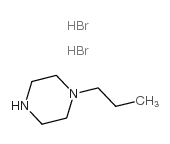| Structure | Name/CAS No. | Articles |
|---|---|---|
 |
1-n-propylpiperazine dihydrobromide
CAS:64262-23-3 |
| Structure | Name/CAS No. | Articles |
|---|---|---|
 |
1-n-propylpiperazine dihydrobromide
CAS:64262-23-3 |